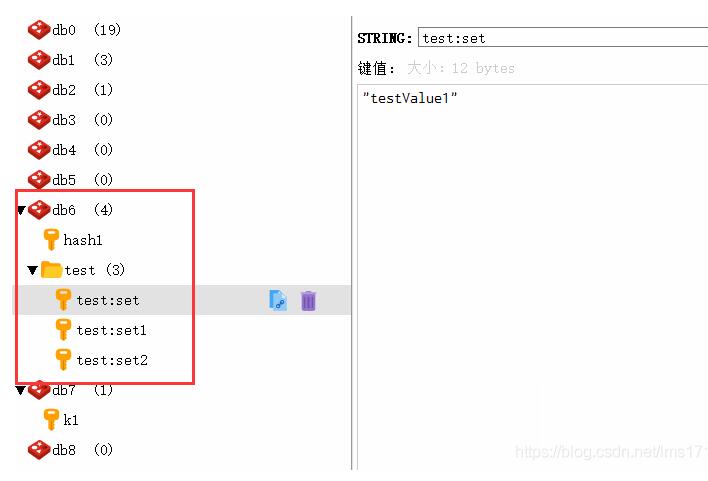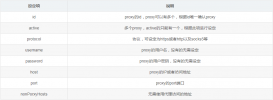1 redis主从复制的概念
多机环境下,一个redis服务接收写命令,当自身数据与状态发生变化,将其复制到一个或多个redis。这种模式称为主从复制。在redis中通过命令salveof命令让执行该命令的redis复制另一个redis数据与状态。我们将主服务器称为master,从服务器称为slave。
主从复制保证了网络异常正常时,网络断开重的情况下将数据复制。网络正常时master会通过发送命令保持对slave更新,更新包括客户端的写入,key的过期或被逐出等网络异常,master与slave连接断开一段时间,slave重连上master后会尝试部分重同步,重新获取连接断开期间丢失的命令。当无法进行部分重同步,则会执行全量重同步。
2 为什么需要主从复制
为了保证数据不丢失,有时会用到持久化功能。但这样会增加磁盘IO操作。通过使用主从复制,可以替代持久化并减少IO操作,降低延迟提高性能。
主从模式下,master负责处理写,slave负责读。虽然主从同步会导致在数据存在不一致窗口,但可以增加读操作的吞吐量。主从模式避免了redis单点风险。通过副本提高系统可用性。当master挂掉,从slave中选举新的机器作为master保证系统可用。
3 主从复制配置及原理
主从复制可以分为三个阶段:初始化、同步、命令传播。
初始化:从服务器执行完 slaveof 命令后,slave与master建立socket连接。连接建立完毕后通过ping进行心跳检测,若master正常,则返回响应。如果出现故障收不到响应,那么slave会重新尝试连接master。如果master设置了认证信息,则会再检查认证数据是否正确。如果认证失败,则会报错。
同步:当初始化完毕,master收到slave的数据同步命令后,需要判断是否执行全量同步还是部分同步。
命令传播:同步完成后,master与slave通过心跳检测判断对方是否在线。slave同时向master发送自己复制缓冲区的偏移量。master根据这些请求,判断是否向slave同步新产生的命令。slave收到同步的命令后执行,最终与master保持同步。
4 使用Lettuce在主从模式下执行命令
常用的Java Redis客户端有Jedis、Redission、Lettuce。这里将通过Lettuce来演示主从模式下的读写分离命令执行。
|
1
2
3
4
5
|
<dependency> <groupId>io.lettuce</groupId> <artifactId>lettuce-core</artifactId> <version>5.1.8.RELEASE</version></dependency> |
下面通过
|
1
2
3
4
5
6
7
8
9
10
11
12
13
14
15
16
17
18
19
20
21
22
23
24
25
26
27
28
|
package redis;import io.lettuce.core.ReadFrom;import io.lettuce.core.RedisClient;import io.lettuce.core.RedisURI;import io.lettuce.core.api.sync.RedisCommands;import io.lettuce.core.codec.Utf8StringCodec;import io.lettuce.core.masterslave.MasterSlave;import io.lettuce.core.masterslave.StatefulRedisMasterSlaveConnection;import org.assertj.core.util.Lists; class MainLettuce { public static void main(String[] args) { List<RedisURI> nodes = Lists.newArrayList( RedisURI.create("redis://localhost:7000"), RedisURI.create("redis://localhost:7001") ); RedisClient redisClient = RedisClient.create(); StatefulRedisMasterSlaveConnection<String, String> connection = MasterSlave.connect( redisClient, new Utf8StringCodec(), nodes); connection.setReadFrom(ReadFrom.SLAVE); RedisCommands<String, String> redisCommand = connection.sync(); redisCommand.set("master","master write test2"); String value = redisCommand.get("master"); System.out.println(value); connection.close(); redisClient.shutdown(); }} |
补充:Redis 客户端之Lettuce配置使用(基于Spring Boot 2.x)
开发环境:使用Intellij IDEA + Maven + Spring Boot 2.x + JDK 8
Spring Boot 从 2.0版本开始,将默认的Redis客户端Jedis替换问Lettuce,下面描述Lettuce的配置使用。
1.在项目的pom.xml文件下,引入Redis在Spring Boot 下的相关Jar包依赖
|
1
2
3
4
5
6
7
8
9
10
11
12
13
14
15
16
17
18
19
20
21
22
|
properties> <redisson.version>3.8.2</redisson.version></properties><dependencies> <dependency> <groupId>org.springframework.boot</groupId> <artifactId>spring-boot-starter</artifactId> </dependency> <dependency> <groupId>org.springframework.boot</groupId> <artifactId>spring-boot-starter-test</artifactId> <scope>test</scope> </dependency> <dependency> <groupId>org.springframework.boot</groupId> <artifactId>spring-boot-starter-data-redis</artifactId> </dependency> <dependency> <groupId>org.apache.commons</groupId> <artifactId>commons-pool2</artifactId> </dependency></dependencies> |
2.在项目的resources目录下,在application.yml文件里添加lettuce的配置参数
|
1
2
3
4
5
6
7
8
9
10
11
12
13
14
|
#Redis配置spring: redis: database: 6 #Redis索引0~15,默认为0 host: 127.0.0.1 port: 6379 password: #密码(默认为空) lettuce: # 这里标明使用lettuce配置 pool: max-active: 8 #连接池最大连接数(使用负值表示没有限制) max-wait: -1ms #连接池最大阻塞等待时间(使用负值表示没有限制) max-idle: 5 #连接池中的最大空闲连接 min-idle: 0 #连接池中的最小空闲连接 timeout: 10000ms #连接超时时间(毫秒) |
3.添加Redisson的配置参数读取类RedisConfig
|
1
2
3
4
5
6
7
8
9
10
11
12
13
14
15
16
17
18
19
20
21
22
23
24
25
26
27
28
|
package com.dbfor.redis.config;import org.springframework.cache.annotation.CachingConfigurerSupport;import org.springframework.cache.annotation.EnableCaching;import org.springframework.context.annotation.Bean;import org.springframework.context.annotation.Configuration;import org.springframework.data.redis.connection.lettuce.LettuceConnectionFactory;import org.springframework.data.redis.core.RedisTemplate;import org.springframework.data.redis.serializer.GenericJackson2JsonRedisSerializer;import org.springframework.data.redis.serializer.StringRedisSerializer;@Configuration@EnableCachingpublic class RedisConfig extends CachingConfigurerSupport { /** * RedisTemplate配置 * @param connectionFactory * @return */ @Bean public RedisTemplate<String, Object> redisTemplate(LettuceConnectionFactory connectionFactory) { // 配置redisTemplate RedisTemplate<String, Object> redisTemplate = new RedisTemplate<>(); redisTemplate.setConnectionFactory(connectionFactory); redisTemplate.setKeySerializer(new StringRedisSerializer());//key序列化 redisTemplate.setValueSerializer(new GenericJackson2JsonRedisSerializer());//value序列化 redisTemplate.afterPropertiesSet(); return redisTemplate; }} |
4.构建Spring Boot的启动类RedisApplication
|
1
2
3
4
5
6
7
8
9
|
package com.dbfor.redis;import org.springframework.boot.SpringApplication;import org.springframework.boot.autoconfigure.SpringBootApplication;@SpringBootApplicationpublic class RedisApplication { public static void main(String[] args) { SpringApplication.run(RedisApplication.class); }} |
5.编写测试类RedisTest
|
1
2
3
4
5
6
7
8
9
10
11
12
13
14
15
16
17
18
19
20
21
22
23
24
25
|
package com.dbfor.redis;import org.junit.Test;import org.junit.runner.RunWith;import org.springframework.beans.factory.annotation.Autowired;import org.springframework.boot.test.context.SpringBootTest;import org.springframework.data.redis.core.RedisTemplate;import org.springframework.stereotype.Component;import org.springframework.test.context.junit4.SpringRunner;@SpringBootTest@RunWith(SpringRunner.class)@Componentpublic class RedisTest { @Autowired private RedisTemplate redisTemplate; @Test public void set() { redisTemplate.opsForValue().set("test:set1", "testValue1"); redisTemplate.opsForSet().add("test:set2", "asdf"); redisTemplate.opsForHash().put("hash1", "name1", "lms1"); redisTemplate.opsForHash().put("hash1", "name2", "lms2"); redisTemplate.opsForHash().put("hash1", "name3", "lms3"); System.out.println(redisTemplate.opsForValue().get("test:set")); System.out.println(redisTemplate.opsForHash().get("hash1", "name1")); }} |
6.在Redis上查看运行结果

从上图可以看到,Lettuce配置操作数据库成功!
以上为个人经验,希望能给大家一个参考,也希望大家多多支持服务器之家。如有错误或未考虑完全的地方,望不吝赐教。
原文链接:https://blog.csdn.net/Revivedsun/article/details/101157571















